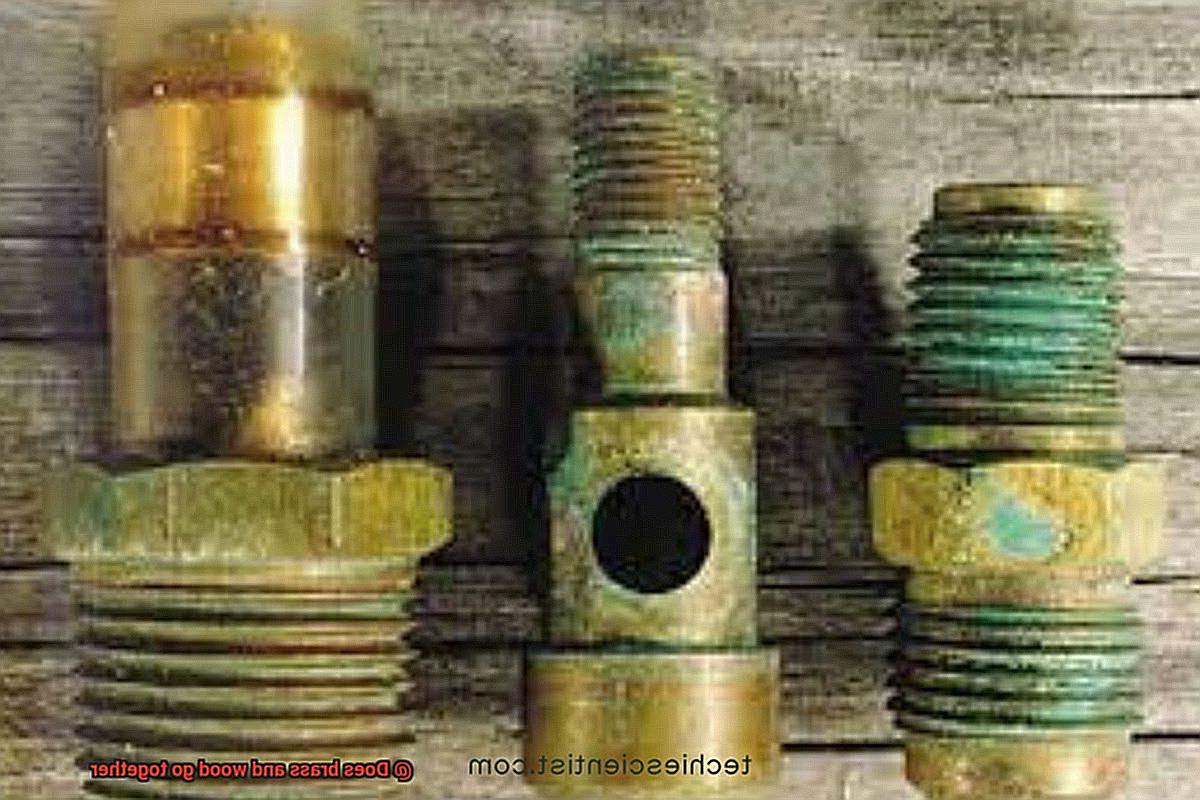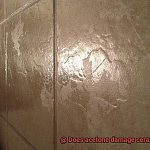Today, we’re tackling a question that’s been nagging at your creative mind: does Elmer’s glue really cling to Styrofoam? Whether you’re a crafty DIYer, a student knee-deep in a project, or just someone with an inquisitive nature, you’ve stumbled upon the right place.
So hold on tight as we uncover the sticky secrets behind Elmer’s glue and its Styrofoam affair.
What is Elmer’s Glue?
Contents
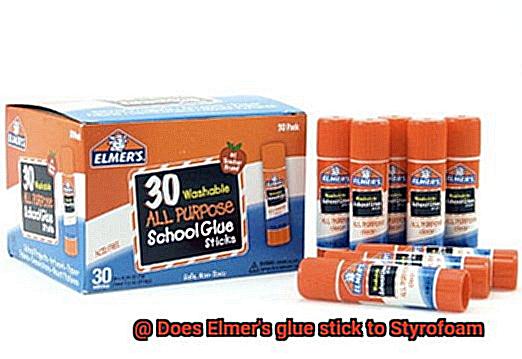
When it comes to adhesive needs, Elmer’s Glue is a household name. From arts and crafts projects to everyday tasks, this versatile adhesive has gained a reputation for its reliability and strong bonding capabilities. In this article, we will dive into the world of Elmer’s Glue, exploring its composition, usage, and the wide range of surfaces it can bond.
Understanding Elmer’s Glue:
At the heart of Elmer’s Glue is polyvinyl acetate (PVA), a water-based adhesive renowned for its versatility. PVA glue forms a strong bond when it dries, making it an ideal choice for various applications. Elmer’s Glue is specifically designed to bond porous materials such as paper, cardboard, fabric, and wood. Its ease of use and reliability have made it a staple in the crafting world.
The Composition:
Elmer’s Glue combines water, PVA, and other additives to create its adhesive properties. The PVA acts as the primary bonding agent, ensuring a secure connection between surfaces. This synthetic polymer dries clear, making it suitable for a wide range of projects.
Types of Elmer’s Glue:
Elmer’s Glue comes in different formulations to cater to specific needs. The all-purpose white glue is the most common type and can be used on various surfaces. Washable glue offers easy cleanup, while school glue sticks provide convenience and precision during application. For projects requiring stronger adhesion, craft bond glue is available.

Using Elmer’s Glue:
Applying Elmer’s Glue is a straightforward process. It typically comes in plastic bottles with twist-off caps or squeeze bottles with nozzles for controlled application. To use, simply apply the glue to the desired surface, press the surfaces together firmly, and allow it to dry. The drying time will depend on the materials involved and the amount of glue used.
Surface Compatibility:
Elmer’s Glue performs best on porous surfaces, such as paper and fabric, where it can penetrate the fibers and create a strong bond. However, it can also be used on non-porous surfaces like plastic or metal, although the adhesive properties may be less effective.

What is Styrofoam?
Styrofoam, an expanded polystyrene foam, is a fascinating material that has become ubiquitous in our everyday lives. It is commonly used in packaging materials, insulation, and disposable food containers. At its core, Styrofoam starts as tiny polystyrene beads that are expanded using steam, resulting in a foam with a closed-cell structure. These tiny air-filled pockets are like thermal warriors, providing excellent insulation properties.
One of the standout features of Styrofoam is its resistance to moisture. Its closed-cell structure acts as a barrier, making it difficult for water to penetrate through. This makes it an ideal choice for shipping delicate items or providing insulation in damp environments.
In addition to its moisture resistance, Styrofoam is known for its lightweight nature. Despite being lightweight, it has an impressive strength-to-weight ratio, allowing it to carry heavy loads without losing its shape. This makes it perfect for packaging fragile items, ensuring they arrive intact and undamaged.
Styrofoam also boasts excellent chemical resistance. It does not easily react with common substances, making it ideal for storing and transporting various materials. However, it’s important to note that certain chemicals can still have an effect on Styrofoam over time, so caution should be exercised.
While Styrofoam offers many benefits, it’s important to consider its environmental impact. Unfortunately, Styrofoam is not biodegradable and can take hundreds of years to break down in landfills. Additionally, its production consumes significant energy and contributes to greenhouse gas emissions. As a result, there is an ongoing search for more sustainable alternatives to Styrofoam.
Can Elmer’s Glue Stick to Styrofoam?
If you’ve ever embarked on a crafting adventure involving Styrofoam, you may have wondered if Elmer’s glue is up to the task of securing your masterpieces. As a popular adhesive used in various craft and DIY projects, Elmer’s glue seems like a versatile choice. However, when it comes to bonding with Styrofoam, it may not be the ideal option.
Styrofoam, also known as expanded polystyrene foam, has a unique surface texture that can pose a challenge for certain adhesives. Elmer’s glue is water-based and primarily designed for porous surfaces such as paper, cardboard, fabric, and wood. While it may initially stick to Styrofoam, its effectiveness in creating a strong and long-lasting bond is limited.
One of the main reasons why Elmer’s glue struggles to adhere to Styrofoam is its porous nature. The tiny air pockets within Styrofoam make it difficult for the glue to penetrate and create a secure attachment. Additionally, Styrofoam is a non-porous material, meaning it does not absorb liquids easily. This property further hinders the ability of water-based glues like Elmer’s to bond effectively with the surface.
So, can Elmer’s glue stick to Styrofoam? The answer is yes, but with limitations. While Elmer’s glue may initially adhere to Styrofoam, it is prone to peeling or detaching over time, especially when subjected to pressure or moisture. If you’re working on a project that involves Styrofoam and you want a strong and durable bond, it is generally recommended to use specialized adhesives that are specifically formulated to bond with this type of material.
Specialized adhesives for Styrofoam are typically solvent-based and offer stronger bonds compared to water-based glues. They are designed to penetrate the surface of Styrofoam and create a secure attachment that can withstand pressure and moisture. These adhesives provide a more reliable solution for ensuring your projects involving Styrofoam stand the test of time.
Advantages of Using Elmer’s Glue on Styrofoam
This renowned adhesive not only bears the trusted name but also holds the key to successful bonding with Styrofoam. In this article, we will explore the advantages of using Elmer’s glue on Styrofoam, unveiling the secrets behind its popularity among crafters and DIY enthusiasts.
Advantage 1: Unyielding Strength
Elmer’s glue is renowned for its exceptional adhesive properties, making it perfect for forming a strong bond with Styrofoam. Whether you’re working on a school project or constructing intricate models, Elmer’s glue ensures that your creations remain securely intact, allowing you to showcase your craftsmanship with confidence.
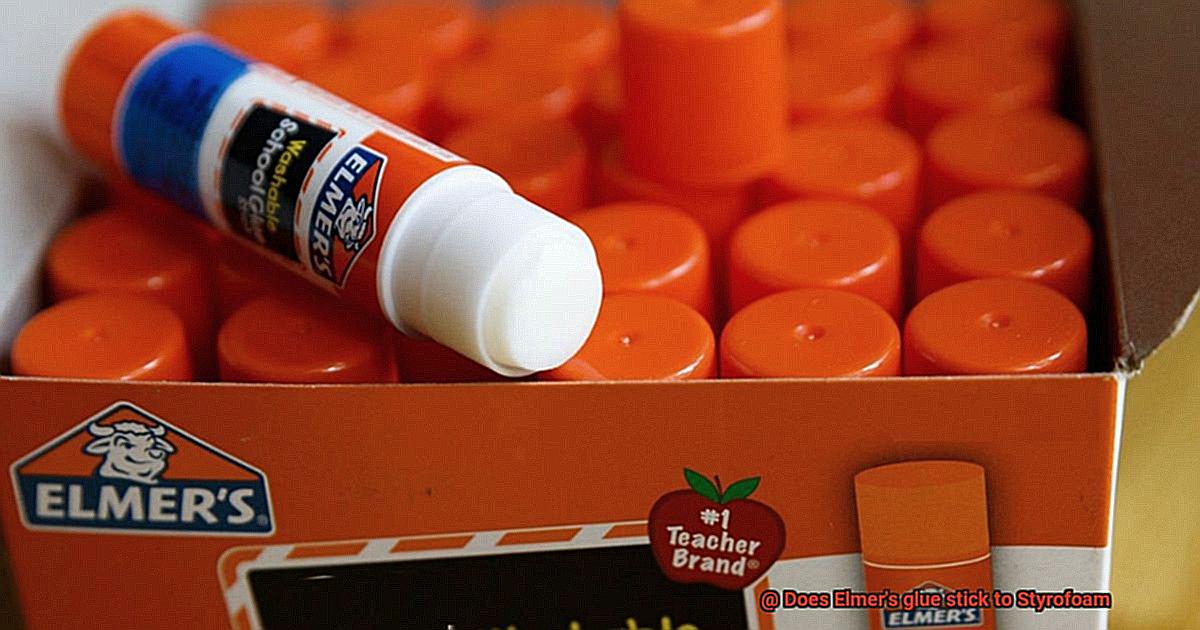
Advantage 2: Unmatched Versatility
From foam sheets to balls and blocks, Elmer’s glue can conquer any challenge posed by different types of Styrofoam. Whether you’re dealing with expanded polystyrene (EPS) or extruded polystyrene (XPS), Elmer’s glue effortlessly adheres to the surface, empowering you to create sturdy and durable crafts that stand the test of time.
Advantage 3: Effortless Application
Applying Elmer’s glue on Styrofoam is a seamless experience. With various forms available, such as liquid glue and glue sticks, you have the freedom to choose your preferred method. The liquid form is ideal for bonding larger areas or multiple pieces together, while the glue sticks offer precision for intricate projects. With Elmer’s glue, precision application has never been easier.
Advantage 4: Invisible Perfection
Bid farewell to unsightly marks and discoloration. Elmer’s glue dries clear, flawlessly blending in with the Styrofoam surface. This feature is particularly crucial when aesthetics matter, ensuring that your project looks polished and professional, leaving onlookers in awe of your craftsmanship.
Advantage 5: Safety First
Crafting should be a worry-free experience for all. Elmer’s glue is non-toxic, making it safe for crafters of all ages. Whether you’re working on a project with your little ones or delving into your own creative pursuits, using a non-toxic adhesive guarantees peace of mind and allows you to unleash your imagination without any concerns.
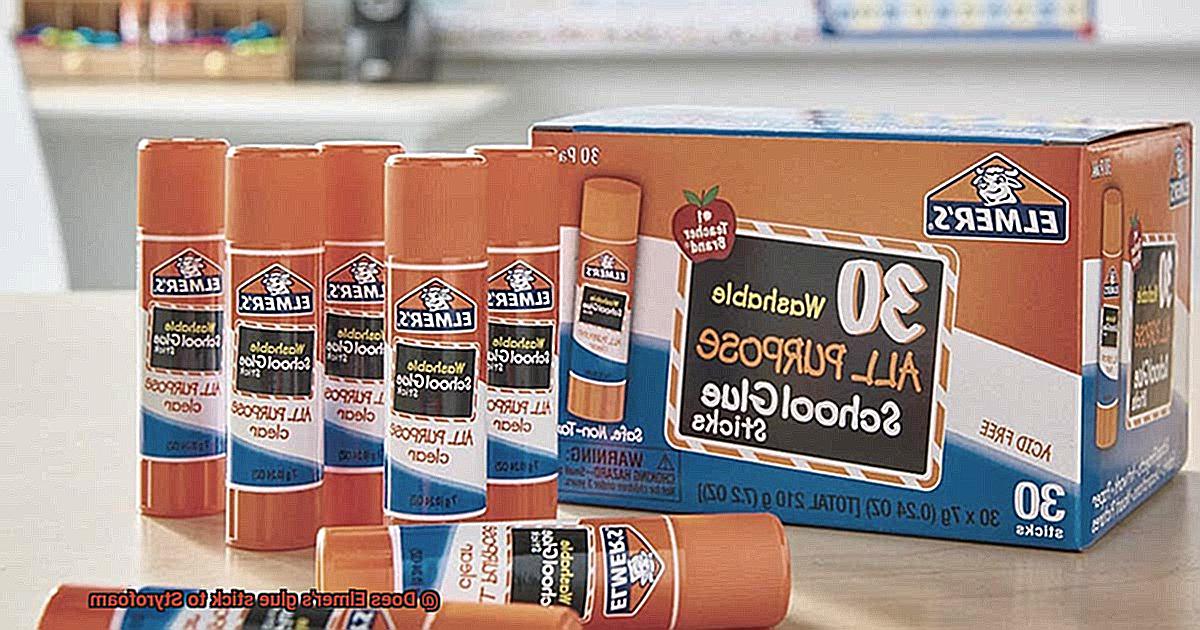
Advantage 6: Wide Availability and Affordability
Say goodbye to the search for supplies. Elmer’s glue is readily available in most craft stores, stationery shops, and online platforms. Furthermore, it offers affordability without compromising quality, making it a cost-effective choice for both hobbyists and professionals alike.
Disadvantages of Using Elmer’s Glue on Styrofoam
While it may seem like a convenient choice, there are several disadvantages to consider. Let’s explore these drawbacks in detail so you can make an informed decision for your project.
- Weak and short-lived bond: Elmer’s glue is not specifically designed for Styrofoam, resulting in a weak and short-lived bond. The glue’s adhesive properties may not be well-suited for the porous surface of Styrofoam, causing pieces to separate over time. This can be especially problematic when durability and stability are required.
- Moisture sensitivity: Elmer’s glue is water-based, making it susceptible to moisture damage. If the glued Styrofoam comes into contact with water or high humidity, the bond may weaken or break. This is particularly concerning if your project will be exposed to outdoor elements or if you live in a humid environment.
- Chemical reaction with Styrofoam: Excessive use of Elmer’s glue on Styrofoam can cause the foam to dissolve or deteriorate. The chemicals in the glue can react with the foam, leading to shrinking or deformation. This compromises the structure and integrity of your project.
- Long drying time: Elmer’s glue takes longer to dry compared to other adhesives. This can be inconvenient if you need to work quickly with the glued Styrofoam pieces. Waiting for the glue to fully dry before moving or handling the project is crucial for a strong bond.
- Visible marks and discoloration: Applying Elmer’s glue on Styrofoam may leave noticeable marks or discoloration on the foam surface, especially with colored or painted Styrofoam. The glue can seep into the porous foam, leaving behind unsightly stains or residue.
- Lack of strength for structural purposes: When using Elmer’s glue on Styrofoam for structural purposes, such as building models or sculptures, it may not provide enough strength and support. Styrofoam’s lightweight nature requires a stronger adhesive capable of withstanding pressure and weight. Elmer’s glue may not hold heavy objects or withstand external forces.
- Heat sensitivity: Elmer’s glue is not heat-resistant. If the glued Styrofoam is exposed to high temperatures or direct sunlight, the adhesive may soften or melt, weakening or breaking the bond. This can lead to the disintegration of your project.
How to Apply Elmer’s Glue to Styrofoam
Styrofoam is a versatile material that is commonly used in arts and crafts projects. Applying Elmer’s glue to Styrofoam can create a strong bond, allowing you to create amazing crafts and projects. In this section, we will explore the steps to properly apply Elmer’s glue to Styrofoam.
Step 1: Prepare the Surface
Before applying the glue, it is essential to prepare the surface of the Styrofoam. This can be done by lightly sanding the area where you want to apply the glue. Sanding creates a rough surface that helps the glue adhere better, resulting in a stronger bond.
Step 2: Choose the Right Glue
Elmer’s glue comes in various types, but for Styrofoam, it is best to use the classic white school glue or craft bond glue. These types of glue work exceptionally well with porous materials like Styrofoam and provide a strong and durable bond.
Step 3: Apply the Glue
Using a brush or foam applicator, apply an even layer of glue onto the surface of the Styrofoam. It is crucial to use thin layers of glue instead of thick globs. Thin layers prevent the glue from seeping through the pores of the Styrofoam, which can cause damage and affect the overall bond strength.
Step 4: Let It Dry
After applying the glue, allow it to dry completely before touching or moving the Styrofoam. The drying time can vary depending on factors such as temperature and humidity. To determine the specific drying time, refer to the instructions on the glue bottle. It is important to exercise patience during this step as rushing can compromise the bond quality.
Step 5: Test the Bond
Once the glue is dry, gently press on the glued area to test the bond. If it feels secure and doesn’t easily peel away, congratulations. You have achieved a strong bond between the Elmer’s glue and Styrofoam. This bond will ensure that your craft or project stays intact.
Specialized Glues for Bonding Styrofoam and Elmer’s Glue
If so, you’ve likely faced the challenge of finding the ideal glue to bond this lightweight and porous material. While Elmer’s glue is a popular choice for many projects, it may not be the best option for bonding Styrofoam. In this blog post, we’ll delve into the differences between specialized glues for Styrofoam and Elmer’s glue, exploring why the latter falls short and presenting superior alternatives.
The Dissolving Dilemma:
Elmer’s glue, containing water as its primary ingredient, poses a significant issue when bonding Styrofoam. This moisture can cause the material to dissolve or melt, potentially ruining your creations before they even have a chance to shine.
Seeking Specialization:
For effective bonding of Styrofoam, turning to specialized glues specifically designed for this material is crucial. One such adhesive is foam-safe CA glue, commonly used in model building and crafting. Its water-free formula ensures a strong bond without any risk of damage.
The Mighty Foam Adhesive:
Another excellent option is foam adhesive or foam glue, formulated specifically for bonding porous materials like Styrofoam. With its thicker consistency, it adheres perfectly to the surface, providing a secure connection that won’t let you down.
Following Instructions:
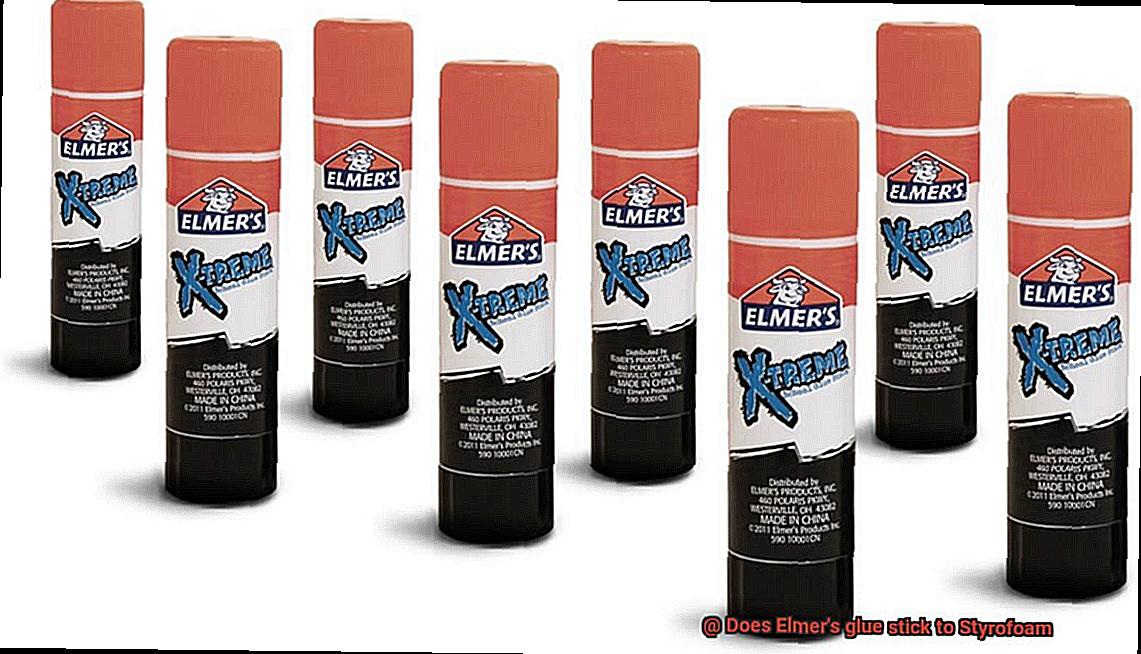
When using specialized glues, it is vital to carefully read and follow the manufacturer’s instructions. Apply the adhesive evenly on both surfaces, allow it to dry completely before joining the pieces, and ensure adequate pressure during bonding for optimal results.
Exploring Alternatives:
For larger or more structurally demanding projects requiring an even stronger bond, consider augmenting specialized glues with hot glue guns or mechanical fasteners like pins or staples.
yVvj8n_6I7s” >
Also Read: What Is the Best Glue For Styrofoam? – Glue Things
Conclusion
In conclusion, Elmer’s glue can indeed adhere to Styrofoam, but its effectiveness is limited. The porous nature of Styrofoam and the water-based composition of Elmer’s glue create challenges in achieving a strong and long-lasting bond. As time goes on, the bond may weaken or even detach, especially when faced with pressure or moisture.
However, there are advantages to using Elmer’s glue on Styrofoam. It offers unparalleled strength and versatility for various types of Styrofoam. With its effortless application and availability in different forms, it seamlessly blends into the surface, drying invisibly. Furthermore, it is a safe non-toxic adhesive suitable for all ages and comes at an affordable price.
On the flip side, there are several disadvantages to consider when using Elmer’s glue on Styrofoam. Its bond tends to be weak and short-lived, making it less reliable. Additionally, it is sensitive to moisture and heat, which can further compromise its effectiveness. There is also a possibility of chemical reactions with Styrofoam that could lead to deterioration or deformation. Moreover, Elmer’s glue takes a considerable amount of time to dry and may leave visible marks or discoloration on the foam surface. Lastly, it lacks the strength needed for structural purposes.
To ensure proper adhesion when using Elmer’s glue on Styrofoam, it is crucial to prepare the surface by lightly sanding it. Choosing the appropriate type of Elmer’s glue—such as white school glue or craft bond glue—is also essential. Thin layers should be applied evenly and allowed ample time to dry completely before testing the bond.
For projects requiring a stronger and more durable bond with Styrofoam, specialized glues like foam-safe CA glue or foam adhesive are highly recommended alternatives. These glues are specifically formulated for bonding porous materials like Styrofoam and consistently deliver superior results compared to Elmer’s glue.
In summary, while Elmer’s glue can stick to Styrofoam to some extent, it may not be the optimal choice for achieving a robust and long-lasting bond.

